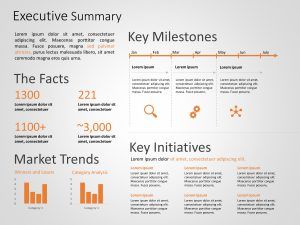
How to Create a Winning Business Plan: Essential Steps and Tips
“How to Create a Winning Business Plan: Essential Steps and Tips”
Creating a business plan is one of the most crucial steps in starting and running a successful business. A well-crafted business plan serves as a roadmap, guiding your business through each stage of growth and helping you stay on track with your goals. In this article, we’ll explore the essential components of a winning business plan, steps to create one, and tips to ensure it stands out to investors.
Understanding a Business Plan
Definition and Purpose
A business plan is not just a document but a strategic roadmap essential for any business. It defines objectives, strategies, and the organizational structure crucial for achieving success. Beyond internal clarity, it acts as a persuasive tool for attracting investors, securing funding, and steering day-to-day operations toward long-term goals. In essence, it encapsulates the future trajectory of the business, ensuring alignment and preparedness for growth and challenges alike.

Credit” wikihow.com
Components of a Business Plan
Executive Summary
The executive summary serves as a condensed version of your comprehensive business plan, encapsulating key elements such as your company’s background, objectives, and reasons for anticipated success. Its purpose is to capture the attention of potential stakeholders by highlighting your business’s unique value proposition and competitive advantages. This brief overview sets the stage for further exploration of the detailed strategies and financial projections outlined in the entire business plan.
Company Description
In this section, describe your business in detail. Explain what your company does, the problems it solves, and what sets it apart from the competition. Include information about the market needs you intend to fulfill and the specific customers or clients you aim to serve.
Market Analysis
Market analysis involves researching your industry, market size, expected growth, and trends. This section should demonstrate your understanding of the market by including data and statistics. Identify your target market, analyze your competitors, and explain how your business will gain an advantage.
Organization and Management
Outline your business’s organizational structure. Include details about the ownership of your business, the management team, and the board of directors. Use organizational charts to help the reader understand who does what in your company.
Service or Product Line
Describe the products or services your business offers. Explain the benefits they provide to your customers and the product lifecycle. If applicable, include information about your research and development activities.
Marketing and Sales Strategy
Detail your marketing and sales strategies. Explain how you will attract and retain customers, your sales process, and your sales goals. Discuss your pricing strategy, advertising, promotions, and how you will reach your target market.

Credit: avada.io
Funding Request
When detailing your funding requirements, articulate the precise amount of capital needed for the next five years and delineate its allocation across specific operational and growth initiatives. Clearly define your financial strategy beyond immediate funding needs, outlining long-term goals like potential business sales or debt repayment. Communicate a comprehensive financial roadmap that encompasses both short-term operational expenses and strategic financial objectives to provide potential investors or lenders with a holistic view of your financial stewardship and growth trajectory.
Financial Projections
When preparing financial projections to support a funding request, it’s crucial to provide comprehensive income statements, cash flow statements, and balance sheets for the next three to five years. These documents should offer a clear picture of your expected revenues, expenses, cash inflows, and outflows, as well as your overall financial health over the projection period. Enhance clarity and visual appeal by incorporating charts and graphs that highlight key financial metrics and trends. This will make it easier for stakeholders to grasp the information quickly and make informed decisions regarding your funding request.
Appendix
While not mandatory, an appendix is an optional section in a document where supplementary materials can be included. These materials often comprise resumes, permits, lease agreements, legal documentation, and any other pertinent documents that provide further context or evidence related to the main content of the document. Including an appendix can enhance the comprehensiveness of the document by offering readers access to detailed information that supports or elaborates upon the main text.
Steps to Create a Business Plan
Research and Analysis
Thorough research forms the bedrock of any robust business plan. By diligently gathering data on industry dynamics, market trends, competitor strategies, and customer preferences, you equip yourself with critical insights. Utilizing this information enables informed decision-making, shaping effective strategies and accurate projections crucial for business success.
Defining Your Business Purpose
Defining the purpose of your business is crucial as it sets the foundation for your mission and goals. Your mission statement encapsulates the core reason for your business’s existence, communicating its broader impact and values. Short-term goals focus on immediate milestones, while long-term goals outline your aspirations and strategic direction, aligning with your overarching purpose to ensure sustained growth and impact.
Outlining Your Business Goals
Setting SMART goals for your business involves defining specific objectives that are clearly outlined and measurable. These goals should be achievable within a realistic timeframe and directly relevant to your business’s overall objectives. By adhering to these criteria, you ensure that your goals are both motivating and trackable, enabling you to gauge your progress effectively and achieve meaningful success.

Credit: slideuplift.com
Crafting an Executive Summary
The executive summary serves as a concise overview of the entire business plan, highlighting essential elements such as the business concept, market opportunity, competitive advantage, financial projections, and strategic goals. By providing a snapshot of the company’s vision and potential, it aims to capture the reader’s interest and encourage further exploration of the detailed sections that follow. The summary should effectively communicate the uniqueness of the business idea, the market needs it addresses, and the team’s capability to execute the plan successfully, compelling stakeholders to delve deeper into the comprehensive business strategy outlined in the document.
Developing Your Marketing Plan
A well-crafted marketing plan is essential for outlining strategies to both attract and retain customers effectively. Begin by leveraging insights from your thorough market analysis to pinpoint opportunities and challenges. Clearly define your target market demographics and preferred marketing channels, and allocate a realistic budget to ensure your strategies are actionable and aligned with your business goals.
Creating Financial Projections
Developing realistic financial projections involves thorough research into market conditions, customer behavior, and operational costs. By crafting detailed income statements, cash flow projections, and balance sheets, you provide a clear financial roadmap for your business. These projections not only show potential investors the profitability and sustainability of your venture but also serve as a strategic tool for making informed decisions and adjustments as your business grows.
Common Mistakes to Avoid
Overlooking the Market Analysis
Entrepreneurs often fail to follow thorough market analysis. When market analysis is overlooked, crucial insights into consumer needs, the competitive landscape, and potential risks are often missed. Consequently, a business plan may lack the necessary depth and specificity to convince investors of its viability and potential for success.
Unrealistic Financial Projections
It is crucial to avoid overly optimistic financial projections when developing a business plan. Such predictions should be grounded in realistic expectations and supported by reliable data sources. Unrealistic financial forecasts can significantly damage the credibility of your business plan, potentially leading to skepticism from investors and stakeholders.
Finalizing Your Business Plan
Reviewing and Editing
Reviewing and editing your business plan is crucial to ensure its clarity and coherence. It’s essential to meticulously scrutinize for any potential gaps or inconsistencies that could affect its effectiveness. Hiring a professional editor can further enhance the polish and professionalism of your document, making it more compelling and credible to stakeholders.

Credit: epodcastnetwork.com
Seeking Feedback
Seeking feedback from mentors, colleagues, and industry experts is crucial for refining your ideas. These individuals offer diverse perspectives that can uncover blind spots and enhance the robustness of your plans. Their insights enable you to identify weaknesses early and make informed adjustments for tremendous success.
Using Your Business Plan
Attracting Investors
A well-crafted business plan is a powerful tool for captivate potential investors by showcasing your business’s viability and growth prospects. By emphasizing your venture’s distinctive features, such as innovative products or strategic market positioning, you can differentiate yourself from competitors and intrigue investors. Furthermore, supporting your financial projections with solid market research and realistic assumptions strengthens your credibility and instills confidence in potential backers.
Guiding Business Operations
Your business plan serves dual roles: first, it is a compelling tool to secure investor interest by articulating your vision and potential returns. Second, it acts as a strategic compass, crucial for steering day-to-day operations in alignment with your long-term objectives. Regularly updating and referencing the plan allows you to measure achievements against predefined goals, enabling informed adjustments and strategic pivots to optimize business outcomes.
FAQs
What is the primary purpose of a business plan?
The primary purpose of a business plan is to outline your business strategy and direction. It helps you clarify your business idea, attract investors, secure funding, and guide your business operations.
How detailed should a business plan be?
The level of detail in a business plan depends on the complexity of the business and the intended audience. Generally, it should be detailed enough to provide a clear understanding of your business, its goals, and strategies.
Can a business plan be modified?
Yes, a business plan is a living document that should be regularly updated to reflect changes in the business environment, market conditions, and business goals.
How often should a business plan be updated?
A business plan should be reviewed and updated at least annually. However, significant changes in the business or market may necessitate more frequent updates.
What are the key elements investors look for in a business plan?
Investors typically look for a clear business idea, robust market analysis, a solid management team, realistic financial projections, and a compelling marketing and sales strategy.
How long should a business plan be?
There is no set length for a business plan, but it should be long enough to cover all the essential components in detail. Most business plans range from 20 to 40 pages.
Conclusion
A well-crafted business plan is essential for the success of any business. It not only helps you to attract investors and secure funding but also serves as a roadmap for your business’s future. By understanding the key components and avoiding common mistakes, you can create a winning business plan that sets your business on the path to success.






